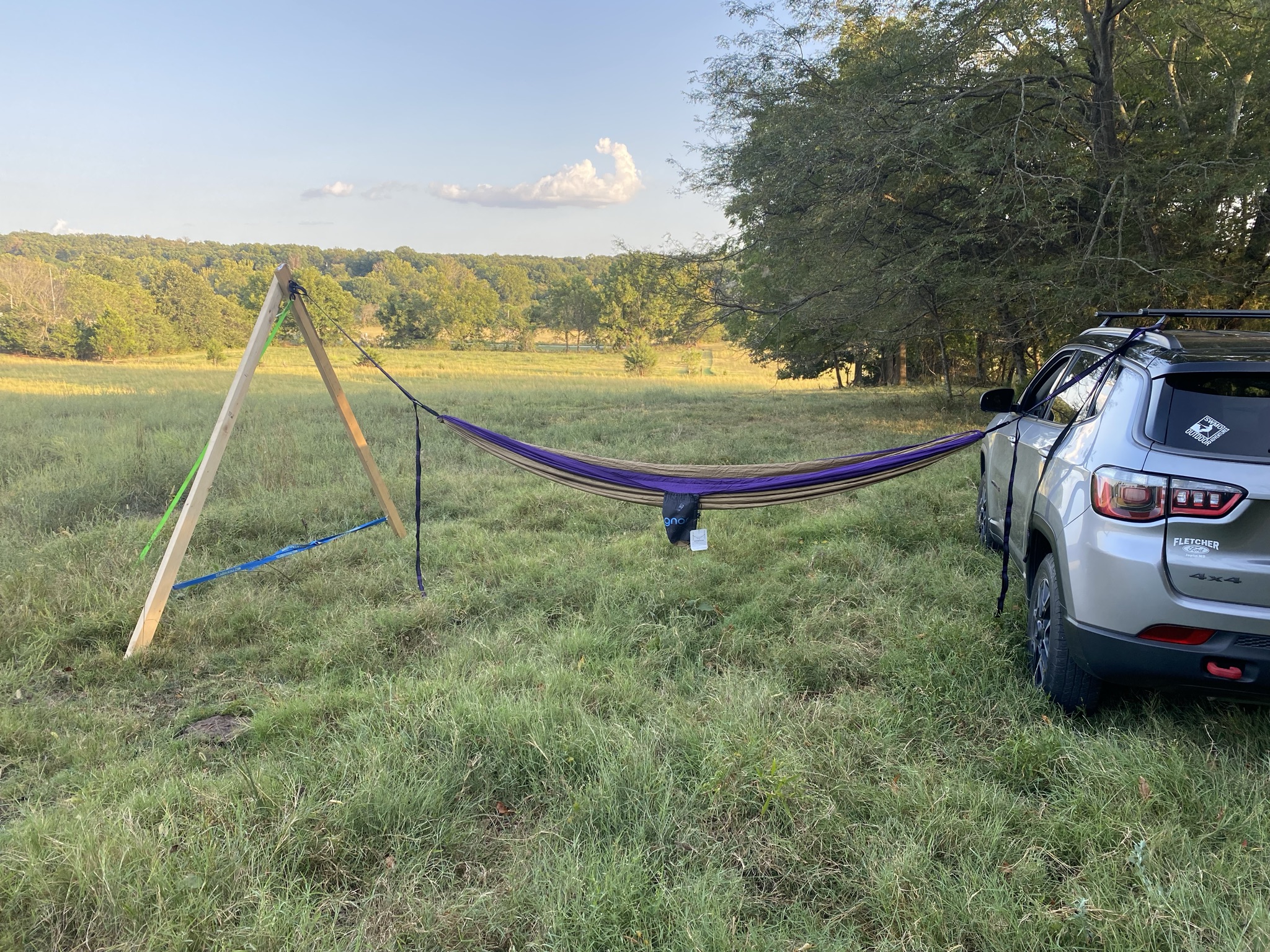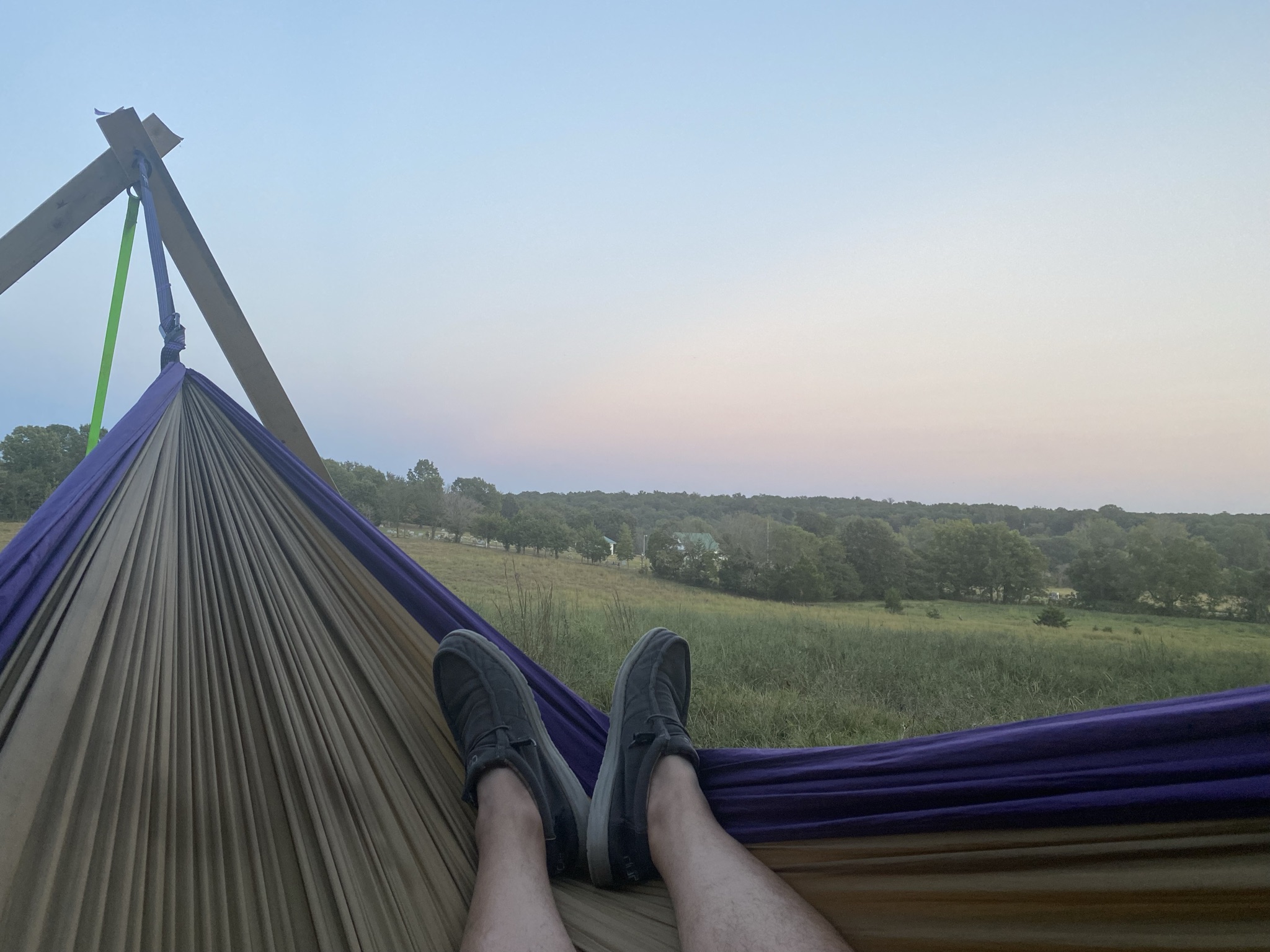Hammock Camping
Tuesday, September 14, 2021 | By: SWMO Outdoor Adventures
How A Hammock Can Make A Good Night's Sleep:
When I think of sleeping in a hammock I think of the outdoors, trees and camping. What most people don’t think of is lightweight, sleeping comfortably, and staying warm. A hammock is a great addition to any camping trip. With a hammock, you'll get a good night’s sleep but also easily relax in the sun. Hammock camping is all about the comfort of your campsite, so don’t overlook the opportunity. It is lightweight to carry in your pack and easy to set up, but large enough to get you into the best sleep of your life. I’m just your average hammock camper and I’ve learned a thing or two about sleeping in one and would like to give you some tips for using your hammock.
Prior to being in Boys Scouts and using a mess hammock outside the tent, I hadn’t really thought much more about using one until I was planning a backpacking trip and realized the old tent I had weighs 9 pounds and takes up a lot of space. Eager to try out a hammock, I borrowed a hammock tent from a friend. We stayed for the night at Devils Den State Park, Arkansas, and found a great location between two trees. What made this spot exciting is one of the trees was in the water. From the long hike in, we all crashed early. The campfire died down and we were out. Later, I woke up to the brightest moon ever shining in my face. Like a spotlight in your face. This hammock was easy to roll over on your stomach to get the moon out of your face. The hammock had woody poles at both ends to keep it from curling around you. Back to sleep but remember I said the second tree was in the water. It was easy to sleep listening to the water. Even in July, cold air comes through the bottom of the hammock-like the arctic cold air. Trying to sleep with the arctic cold hitting you is a little hard to sleep through.

Now that I’ve got this hammock camping figured out, I take a sleeping pad with me to lay on inside my hammock. This will do two things for you, keep the artic bast from hitting you and help you not feel like a butterfly in a cocoon as much. If you set up your hammock correctly, you can lay diagonal in your hammock to help you sleep on your side or even your stomach.
THE SETUP:
One of the big advantages is setup is quick and painless. So easy you can put up your Gnar hammock in the dark when your friends are still trying to figure out how to put up a tent. You just need your hammock, recommend tree straps and two trees about 15 feet apart. Tree straps make it even easier. At 6 feet high on the tree, wrap the straps around the tree, through the end loop, and clip your hammock to the straps. Done. You can adjust the hammock up and down on the straps for the best comfort.
LACK OF TREES:
What if you don’t have two trees. Don’t give up. There are some options to support one end or both ends. I’ve used two 2x4’s with an eye bolt holding the end together in an “A” shape. Support by a rope to a steak and hooked up to your hammock. In the picture below I’m using the roof rack on my Jeep on one end. Yes, there are trees around but this is an option when there are no trees around. I have a strap going through two eyelets on the bottom of the 2x4s to secure the base. You can buy some commercialized options to do the same thing.
 Courtesy: Gnar Hammocks
Courtesy: Gnar Hammocks
SLEEPING:
Now that we got the basics for the night and ready to watch the stars. One big mistake people make is sleeping like a banana in the hammock. To fix the mistake, sleep at an angle in the hammock, have your feet to one side and your head going to the opposite side. You will find the hammock doesn’t squeeze you as much on the sides as a banana peel. Another sleeping tip is you don’t want a lot of curve in your hammock. A good way to measure this is to hold your index finger and thumb in a 90 degree and hold this angle to your tree straps. You should be able to create a 90-degree triangle when the tip of your finger and thumb touch the tree strap. By doing this you won’t be stuck sleeping on your back the whole night. Especially if your buddies are throwing rocks at you because of your snoring.
Use an Underquilt to help stay warm. Underquilt hangs a few inches under your hammock to create a barrier of warm air from your body heat. Some will enclose over you to make a pod around you to keep you warm. I’ll be doing a review later on under quilts.
 Courtesy: Gnar Hammocks
Courtesy: Gnar Hammocks
Don’t worry about the rain. Rain tarps come in all shapes and sizes and provide a great option for a shelter. They have gotten lightweight for your backpacking needs. Don’t make it high above your hammock because they can also provide insulation during the cold. I like to stretch mine tight to make sure the rain runs off. Another useful tip is to tie small pieces of 550 cord on your tree strap to create a drip loop to prevent water from running down the strap to your hammock.
Now go enjoy the outdoors and create your own adventure. I hope this article helps with your next trip. We support our friends over at Gnar Hammocks and thank you for letting us use your wonderful hammocks.


Leave a comment
0 Comments